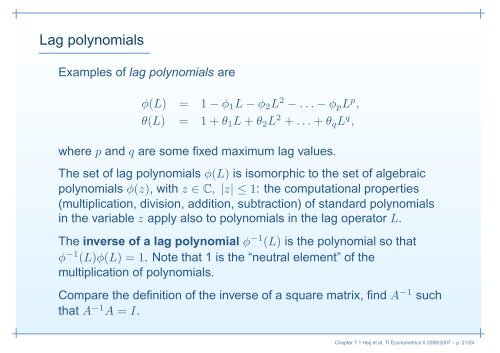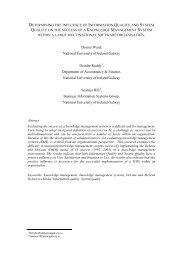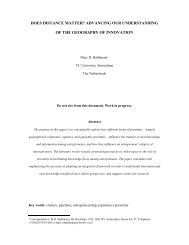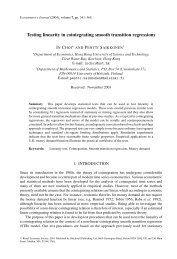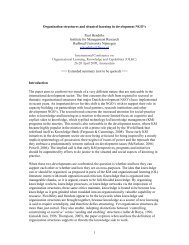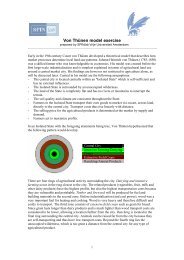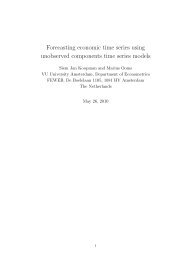Linear Time Series Models for Stationary data - Feweb
Linear Time Series Models for Stationary data - Feweb
Linear Time Series Models for Stationary data - Feweb
Create successful ePaper yourself
Turn your PDF publications into a flip-book with our unique Google optimized e-Paper software.
Lag polynomials<br />
Examples of lag polynomials are<br />
φ(L) = 1 − φ1L − φ2L 2 − . . . − φpL p ,<br />
θ(L) = 1 + θ1L + θ2L 2 + . . . + θqL q ,<br />
where p and q are some fixed maximum lag values.<br />
The set of lag polynomials φ(L) is isomorphic to the set of algebraic<br />
polynomials φ(z), with z ∈ C, |z| ≤ 1: the computational properties<br />
(multiplication, division, addition, subtraction) of standard polynomials<br />
in the variable z apply also to polynomials in the lag operator L.<br />
The inverse of a lag polynomial φ −1 (L) is the polynomial so that<br />
φ −1 (L)φ(L) = 1. Note that 1 is the “neutral element” of the<br />
multiplication of polynomials.<br />
Compare the definition of the inverse of a square matrix, find A −1 such<br />
that A −1 A = I.<br />
Chapter 7.1 Heij et al, TI Econometrics II 2006/2007 – p. 21/24


